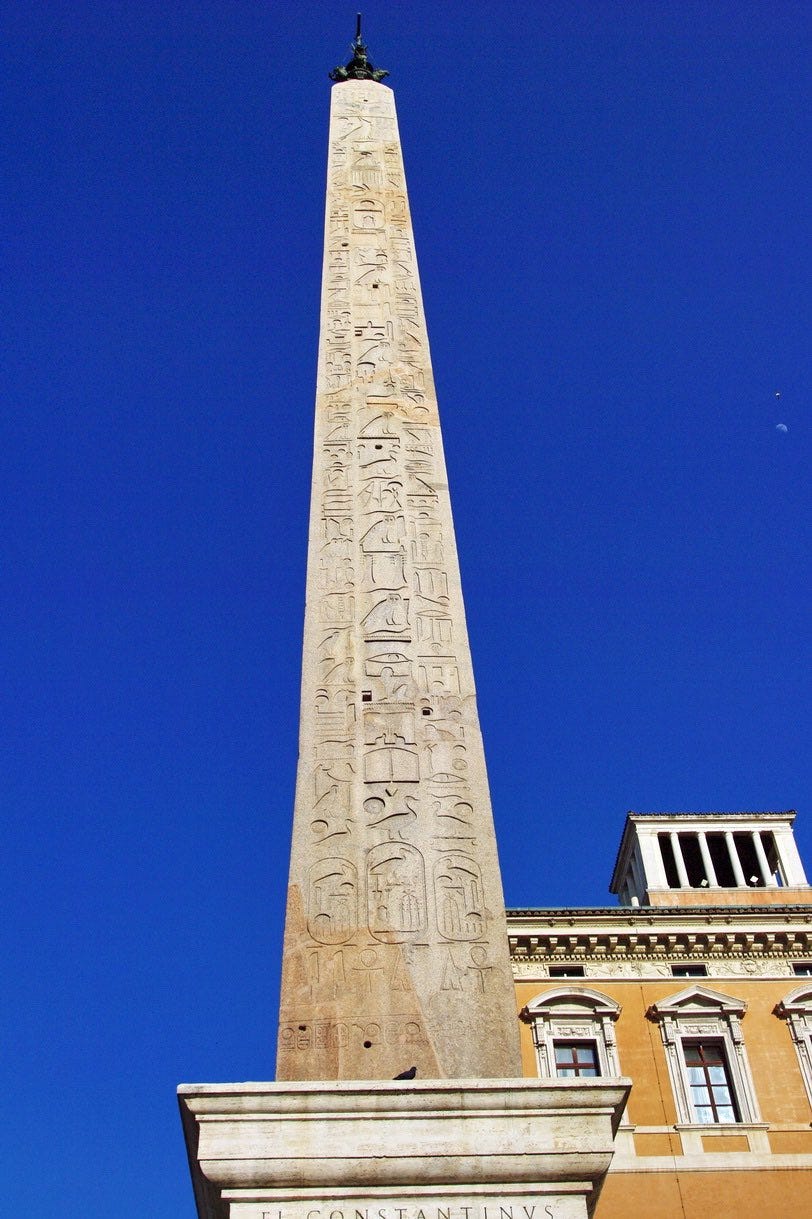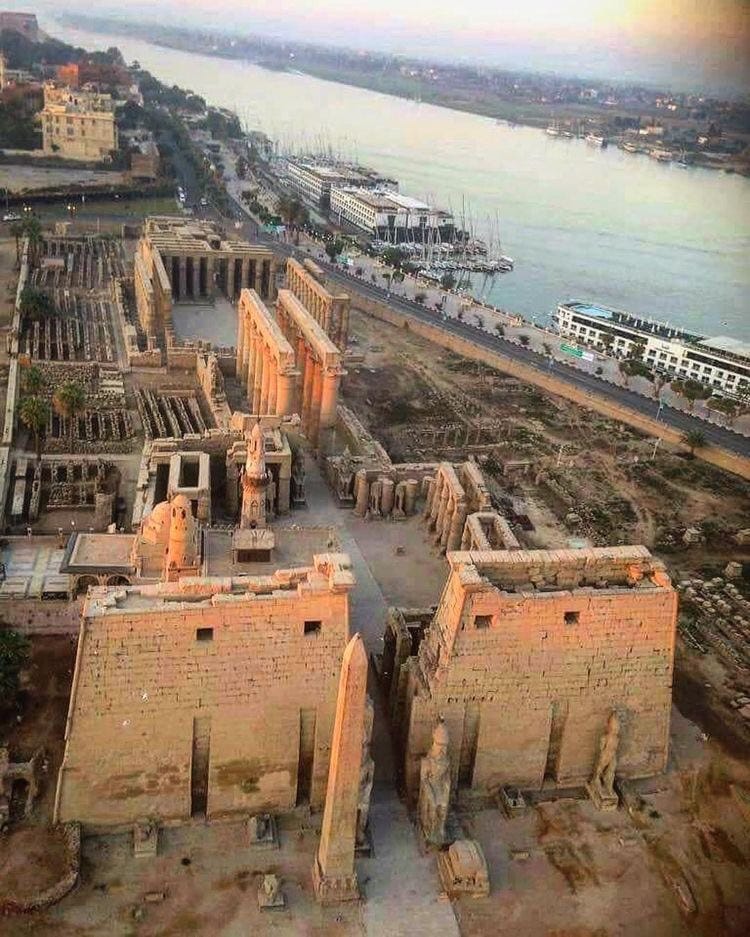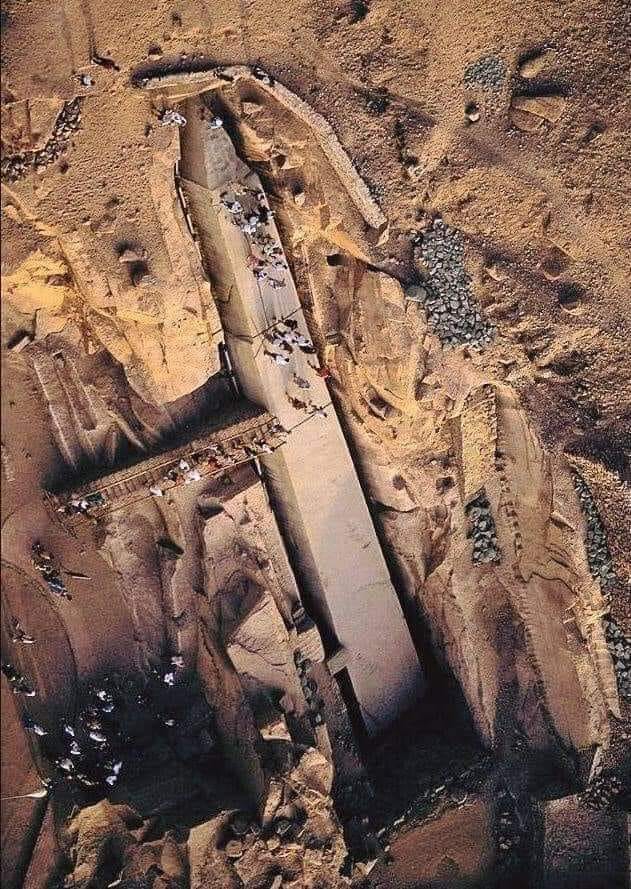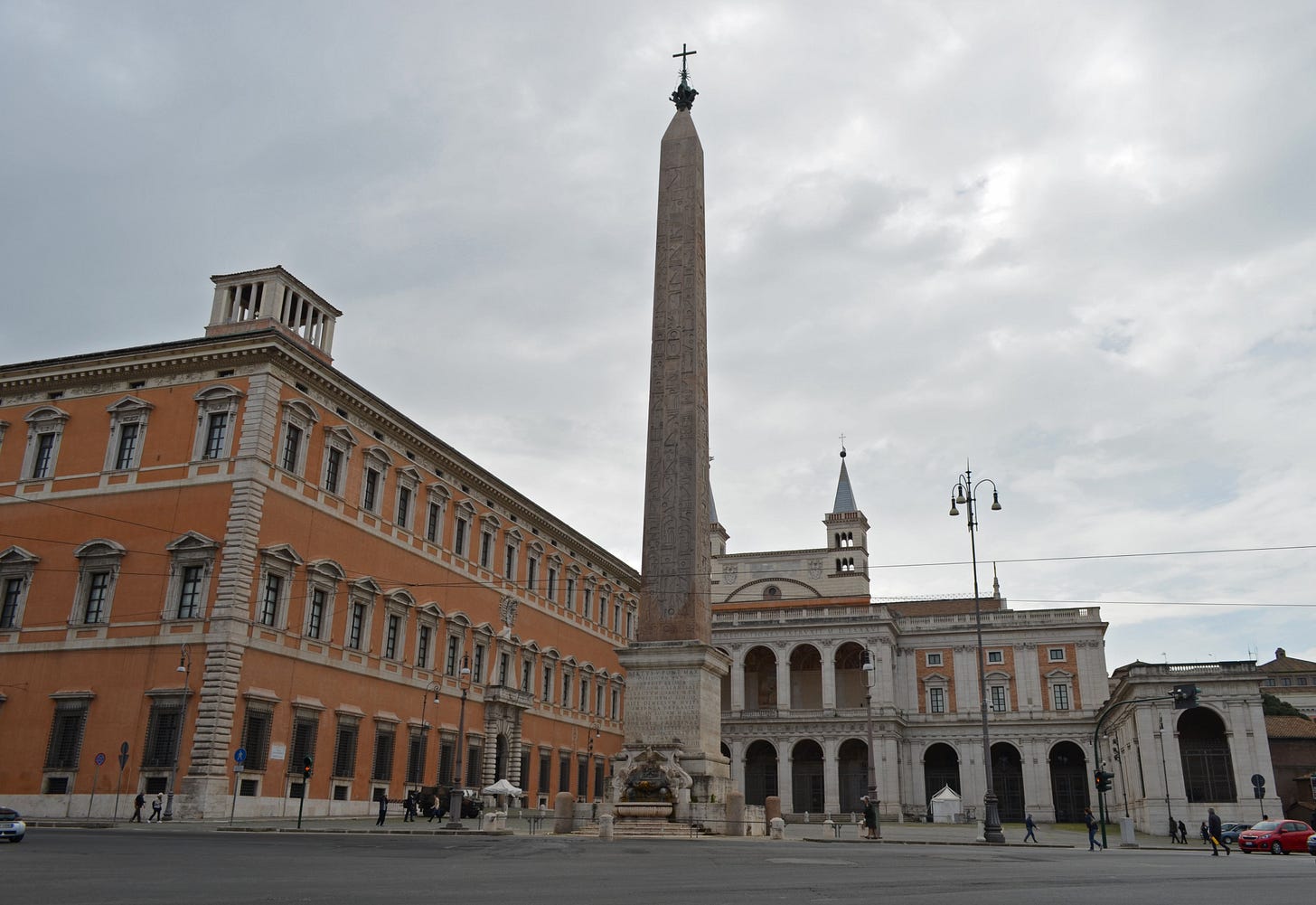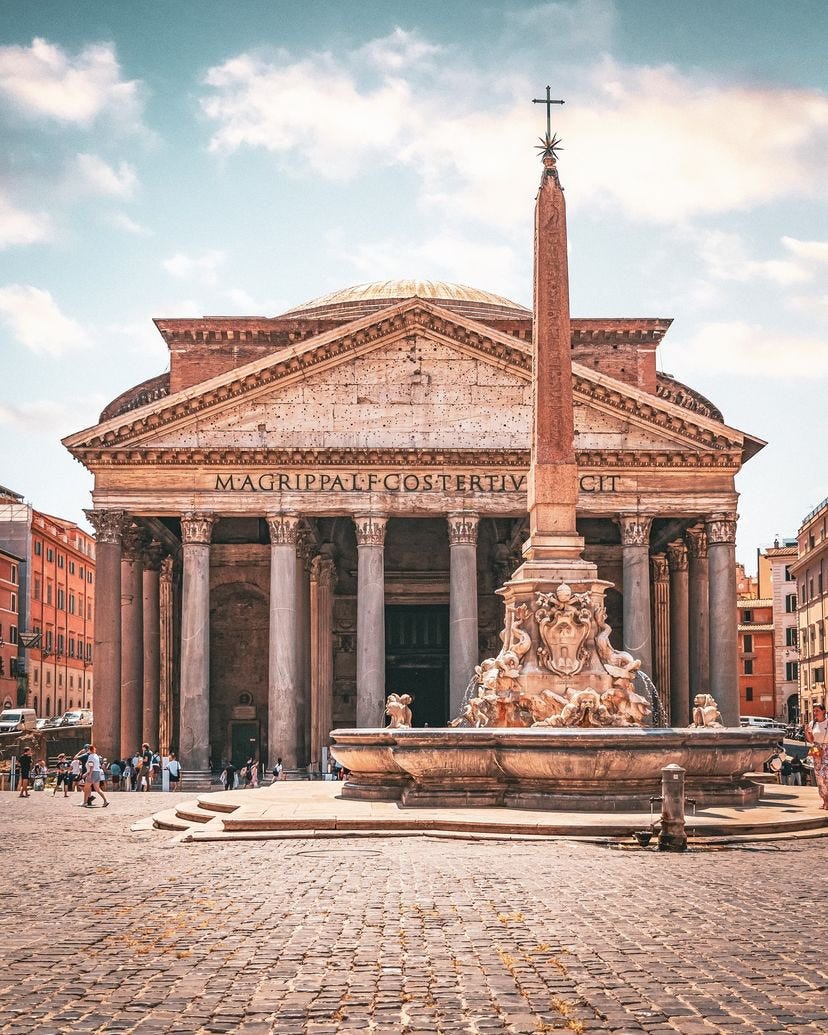Rome’s oldest wonder isn't even Roman...
They say Egypt gave the world pyramids, but its sharpest legacy might be what the pharaohs left pointing skyward.
Every empire wants to tell the world it matters but some do it by stealing someone else’s story. Two articles, one by World Scholar and the other by Culture Explorer, peel back the layers of that story through the lens of a single, striking symbol: the obelisk.
Carved in ancient Egypt as sacred beams of light for Ra, these monolithic spires were never meant to leave the Nile. Yet today, Rome boasts more Egyptian obelisks than Egypt itself.
World Scholar traces the political theft, beginning with Augustus after the Battle of Actium, when the conquest of Egypt gave birth to a new visual language of power in imperial Rome.
Culture Explorer takes it further probing the spiritual weight these granite spires carried. From the divine light of Ra to the shadows cast in Paris, London, and Washington, obelisks became trophies of ambition and mystery.
Together, these two pieces form a single narrative: one of ancient wonder, imperial repurposing, and the enduring human need to reach for the sky—even if someone else built the ladder.
Rome’s oldest wonder isn't even Roman...
By World Scholar
It may come as a surprise to the thousands of tourists who shuffle daily past the Lateran Basilica en route to the Colosseum that the oldest surviving monument in all of Rome isn't Roman at all...
In 4,000 years of ancient Egyptian history, nothing comes close to the Pyramid of Giza in terms of size — it's a one-of-a-kind monument. But the lesser-known wonders of the civilization were simply raw stone.
Obelisks.
Essentially, they are tall monoliths, capped by a pointed pyramidion. Most were made from single blocks of Aswan red granite and carved to honor Ra, the Egyptian sun god. Covered in hieroglyphs and often gilded with electrum (an alloy of gold) at the tip to reflect the sun’s rays and make the stone look more majestic.
They were considered divine and that explains why the most common place you'd find them, thousands of years ago, woild be outside the gates of Pharaohs' temples. Most were erected in pairs after being quarried in the city of Aswan and then transported along the river Nile by specially built ships.
Other civilizations were impressed by these spires and so the Canaanites, the Phoenicians, and later, the Greek began to mimic them back at home.
But no people were as taken aback with obelisks as the Romans...
Augustus was the first Emperor to set the tone. Obelisks began to be shipped from across the Mediterranean to adorn the capital of the empire. Heliopolis, Alexandria, even Thebes — no city was were safe.
In total, the Romans brought at least 48 obelisks to their capital.
Today, you can still see 13 in person and of those only 8 are originals.
To put this into perspective, that means Rome, which mind you is more than 2,000 miles away from Egypt, has more ancient Egyptian obelisks than Egypt itself.
Though, this would have never been possible if not for the year 31 BC...
(if you look closely at the entrance of the Luxor Temple, you can see the missing obelisk on the right, which can now be found in Paris).
In 31 BC, Rome’s internal wars, fueled by ambition and the slow death of its Republic, would end in the Battle of Actium. On one side stood Octavian, heir to Julius Caesar. On the other: Marc Antony and Cleopatra, Queen of Egypt.
Outmaneuvered and outnumbered, Cleopatra would flee, leaving Octavian to remain victorious and with that, Egypt would become the Empire's province. Octavian would soon be known by another name: Augustus, the first Roman Emperor.
Shortly after, he arranged the transport of at least two massive obelisks from Heliopolis, the "City of the Sun," to Rome.
As you can probably imagine, just carving them is a feat but transporting them was no simple task. Each monolith was a single slab of granite and weighed hundreds of tons. For example, the largest, unfinished obelisk ever found in Aswan would have weighed approximately 1,200 tons. It's gigantic even by ancient standards, comapred to the Luxor Obelisk in Paris that weighs a mere 227 tons.
The first of these obelisks was placed in the Circus Maximus, the world's largest ancient stadium for chariot races. The second stood in the Campus Martius.
Both obelisks bore nearly identical inscriptions:
“Imperator Caesar, son of a divinity, Augustus, Pontifex Maximus… with Egypt having been brought into the power of the Roman People, gave this gift to the Sun.”
Unfortunately by the time of the Middle Ages, many of Rome’s obelisks were largely forgotten.
When Pope Sixtus V took office in 1585, the city was in desperate need of renewal. Sixtus wanted to connect all the major churches and mark each crossing or piazza with something that could be easily seen from afar by pilgrims.
He tasked an engineer, Domenico Fontana, with this vision. Later, the popes would order the monuments to be Christianized, withe crosses and papal coat of arms.
Perhaps the most important change was in the Vatican Square, placing a 327-ton obelisk in the center of the new piazza before the great St. Peter’s Basilica.
It took over 900 men, 75 horses and a system of pulleys and winches to pull of.
This wasn't the only one. Fontana raised the Flaminio Obelisk at Piazza del Popolo, originally placed by Augustus at the Circus Maximus.
The 3-500 year-old Lateran Obelisk, the tallest and oldest in Rome, was moved from the Circus and installed in front of San Giovanni in Laterano. It had previously collapsed so wqs now 4 meters shorter.
Near the Pantheon, you can find three obelisks: Monte Citorio, Macuteo, and Minerva. The latter was rediscovered in the 1600s and now rests atop Bernini’s elephant statue while The Monte Citorio Obelisk, once part of Augustus’s sundial complex now graces the Italian Parliament.
And that’s it for how Rome conquered Egypt, brought its history home and now has the greatest collection of obelisks known to man.
So next time you find yourself gazing at the Pantheon and wondering how something that old can still be standing today, turn around and take a moment to appreciate the stone needle that ancient civilization fought tooth and nail for.
Book Corner
The many meanings of obelisks across nearly forty centuries, from Ancient Egypt (which invented them) to twentieth-century America (which put them in Hollywood epics). Nearly every empire worthy of the name—from ancient Rome to the United States—has sought an Egyptian obelisk to place in the center of a ceremonial space.
Keep reading with a 7-day free trial
Subscribe to The Culture Explorer to keep reading this post and get 7 days of free access to the full post archives.




